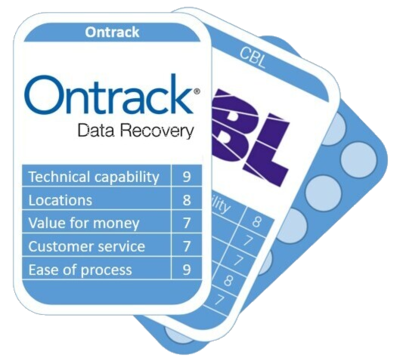
London,United Kingdom – March 16, 2022 —
Today, Data Recovery Compared discussed its data recovery solution, as well as what data recovery includes and how data loss occurs. Data Recovery Compared has combed the industry to find its customers the finest data recovery options possible. Additionally, the company provides a free consultation and examination, with the lowest pricing guaranteed.
Data Recovery Compared has over 25 years of expertise offering skilled data recovery services. It can connect customers with a local data recovery provider that is both authorized and customized to address their individual concerns. Users may start the data recovery procedure by clicking and using a fast quotation tool on their website.
Human error, software malfunctions (such as computer viruses), power outages, and hardware problems are all common reasons for data loss. Fortunately, data saved on a digital media is almost always recoverable. The article defines data recovery, discusses the most prevalent causes of data loss, and discusses possible solutions.
Data recovery can be described as the process of recovering information from a storage device that is inaccessible through conventional ways because of previous deletion or particular damage to the digital medium. Numerous techniques are employed to recover lost files, but only if their information is still available someplace inside the storage. For example, data recovery does not cover circumstances in which a file has never been written to a persistent storage medium, such as documents that were generated but were unable to be saved to the hard disc drive due to a power loss.
Additionally, none of the known restoration techniques are capable of dealing with situations of permanent erasure, which happens when another piece of data takes up its storage space – in such scenarios, the lost files may be recovered only from an external backup.
In general, data recovery procedures are classified into two categories: those that are software-based and those that involve repairing or replacing damaged hardware components in a laboratory environment. In the majority of situations, a software-based solution is used, which entails the employment of specialized utilities capable of deciphering the logical structure of the issue storage, reading out the needed data, and delivering it to the user in a usable format for further copying.
Physical repairs are carried out by specialists in the most severe cases, such as when some mechanical or electrical components of the drive cease to function properly. In this case, all measures are geared toward a one-time extraction of the critical content, with no possibility of continuing to use the affected device.
Some of the causes of data loss are rather straightforward, for example, inadvertent file deletion. When a file is deleted, each file system behaves differently. For example, in Windows, the FAT file system marks file directory entries as “unused” and deletes all information about the file’s allocation (except for the file’s beginning); in NTFS, only the file entry is marked as “unused,” the directory record is deleted, and the disc space is also marked as “unused”; and in most Linux/Unix file systems, the file descriptor (information about the file’s location, type, and size, among other things) is destroyed along with the disc space too.
The primary objective of file deletion is to free up storage space formerly occupied by the file in order to make room for a new file. Storage space is not instantly erased for performance reasons, which means that the actual file content remains on the disc until the storage space is utilized to save a new file.
Additionally, formatting might result in file loss. File system formatting may be initiated by accident, for example, as a consequence of providing the incorrect disc partition or mishandling a storage device (e.g. NAS devices usually format the internal storage after an attempt to reconfigure RAID).
The formatting process establishes empty file system structures on the storage device and then overwrites any existing data. If the new and previous file systems have the same type, it overwrites the old file system structures with new ones. If the file systems have different kinds, the structures are written to separate places, which may delete the user’s files.
Finally, logical corruption of the file system might result in data loss. While modern file systems provide a high degree of security against internal mistakes, they often fall victim to hardware or software failures. Even a tiny amount of incorrect material put to an incorrect position on the storage may destroy file system structures, destroying file system object linkages and rendering the file system unreadable. This problem may sometimes arise as a result of blackouts or device malfunctions.
To find out more about Data Recovery Compared and what it can offer clients, see the following URL: https://www.datarecoverycompared.com/
Contact Info:
Name: Data Doc
Email: Send Email
Organization: Data Recovery Compared
Address: 4th Floor, Silverstream House, 45 Fitzroy Street, London, Fitzrovia W1T 6EB, United Kingdom
Phone: +44-20-4530-5789
Website: https://www.datarecoverycompared.com/
Source: PressCable
Release ID: 89070812






